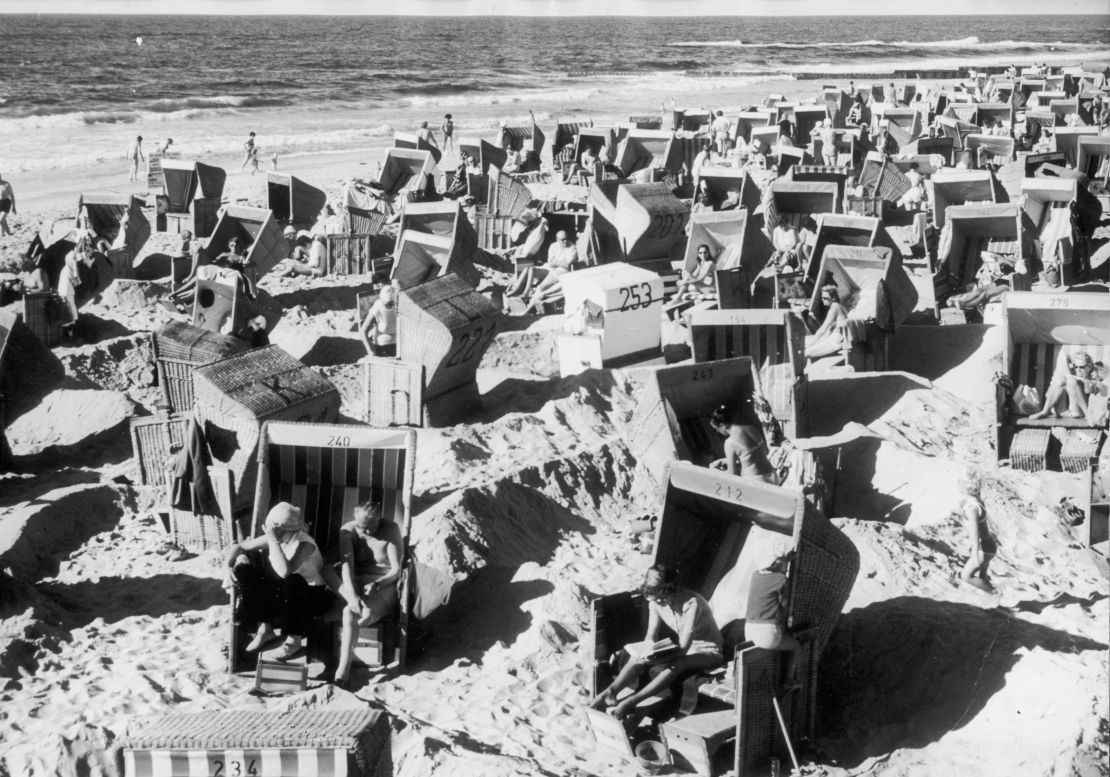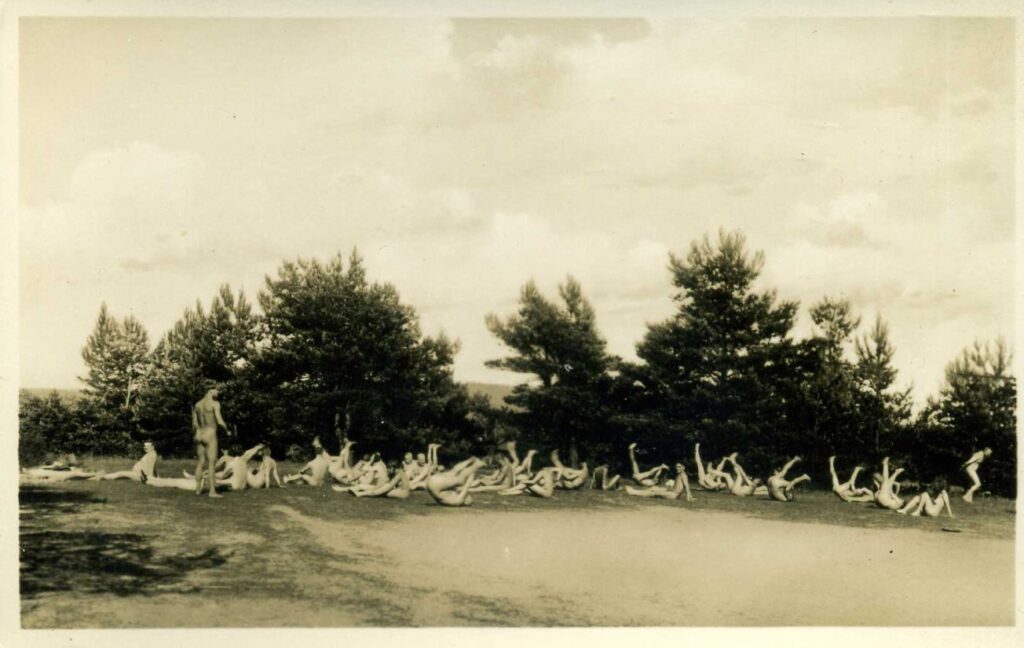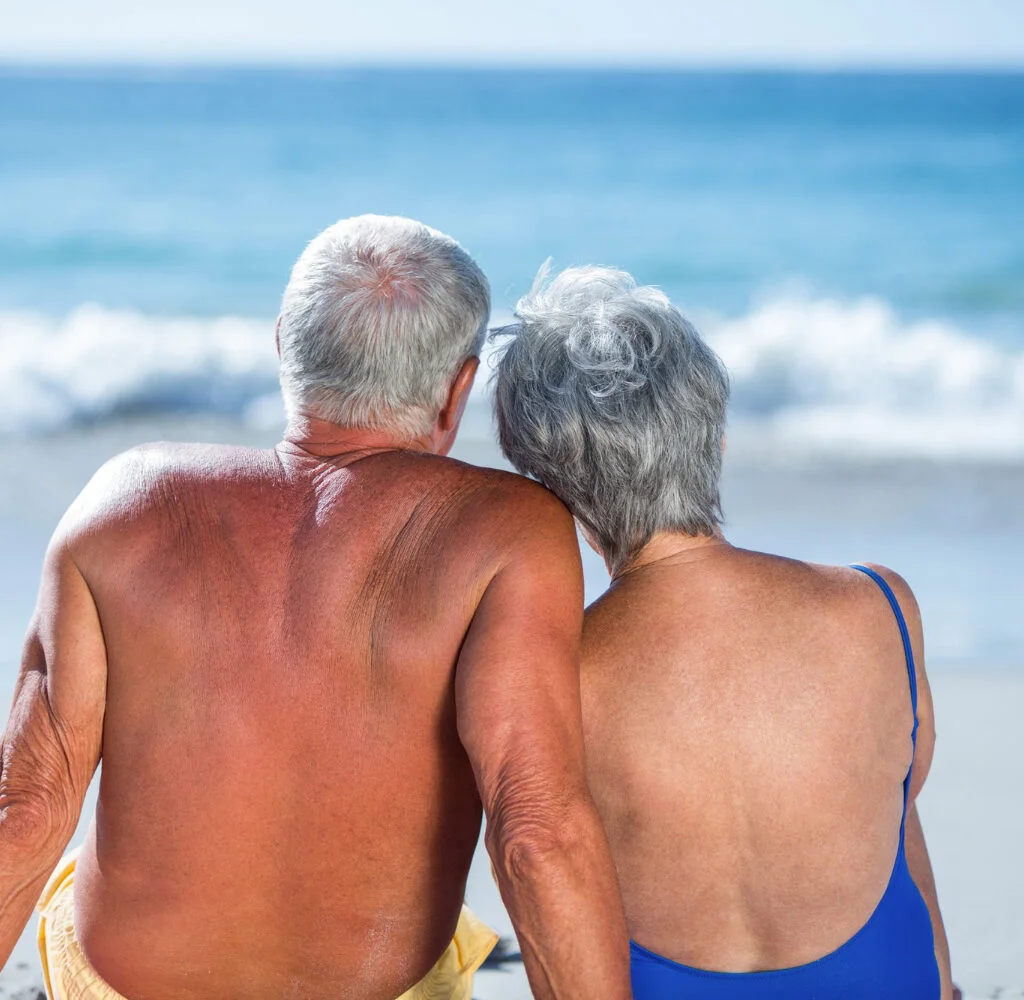Germany’s Naked Truth: The 19th-Century Nudism Movements Co-opted by the Nazis

In modern Germany, nudism—or Freikörperkultur (FKK), meaning “Free Body Culture”—is seen as a symbol of body positivity, natural health, and personal freedom. Beaches, parks, and spas where nudity is the norm reflect a culture that, more than almost any other, has embraced social nudity without shame or sexual connotation.
But behind this open-minded reputation lies a complicated and often misunderstood history. Germany’s nudist movement originated as a radical push for reform in the 19th century, rooted in ideals of health, freedom, and anti-industrialism. However, in the 1930s, this movement was co-opted and redefined by the Nazi regime, which saw nudism not as a symbol of liberty, but as a tool for racial ideology, eugenics, and nationalist purity.
This article traces the surprising evolution of German naturism, from its utopian beginnings to its manipulation by one of history’s most oppressive regimes.
🌿 The Origins: 19th-Century Reform Movements
Germany’s nudism movement can be traced back to the late 1800s, when industrialization had dramatically changed European society.
Key Influences:
- Urbanization and pollution led to poor health and disconnection from nature.
- Romanticism idealized a return to the “natural state” of humanity.
- Alternative health movements emerged, including vegetarianism, natural medicine, and sunbathing.
Out of these ideals grew Freikörperkultur (FKK), which promoted:
- Naked sunbathing for physical and mental health
- Natural hygiene and living
- Gender equality and body acceptance
- Liberation from the social rigidity of Victorian norms
By the turn of the 20th century, nudist colonies, clubs, and publications had sprung up across Germany, often in association with progressive, pacifist, or even anarchist ideologies.
🏕️ Early Nudist Pioneers and Spaces
One of the earliest and most famous nudist spaces was:
- Freilichtpark, opened in 1903 near Hamburg by Paul Zimmerman—considered the first organized nudist camp in the world.
Other notable pioneers included:
- Richard Ungewitter, who wrote Nacktheit und Kultur (Nakedness and Culture), promoting nudity as a return to ancient Greek ideals.
- Karl Wilhelm Diefenbach, a painter and nudist who merged naturism with spiritual mysticism and pacifism.
Early naturists often faced legal challenges and public scandal, but their influence grew, especially after World War I.

✨ Between the Wars: Nudism as Utopia
After WWI, Germany entered the Weimar Republic era (1919–1933)—a time of both cultural experimentation and political instability.
- FKK gained momentum, with thousands joining nudist associations.
- Nudism was closely linked to left-wing politics, feminism, vegetarianism, and anti-war sentiments.
- Publications like Licht-Land and Die Schönheit promoted images of wholesome, idealized nudity in natural settings.
This era saw the golden age of naturism—a utopian movement that merged health, equality, and harmony.
🥀 The Nazi Hijacking of Naturism (1933–1945)
When the Nazis came to power in 1933, they initially suppressed nudist clubs, which were viewed as leftist, subversive, and sexually inappropriate.
But then came a shift…
The Nazi regime realized that nudism could be redefined to align with their racial and eugenic ideals. Instead of dismantling the movement entirely, they co-opted it and reshaped it to serve the state.
Key developments:
- Nazification of FKK Clubs
- Independent clubs were banned or absorbed into Reich-controlled organizations like the Reich League for Physical Exercise.
- Nudism was reframed as a means to celebrate the Aryan body and encourage racial health.
- Censorship and Redirection
- Naturist publications were censored to remove liberal or pacifist content.
- Nude imagery had to reflect physical perfection, wholesomeness, and discipline—never eroticism.
- Racial Purity Emphasis
- Nudism became a vehicle to display and promote the ideal Aryan physique—strong, white, athletic.
- Jewish and non-Aryan people were banned from participation.
- Control of the Body
- In Nazi ideology, the human body was not an individual’s possession but a resource of the state—to be cultivated for strength and productivity.
Ironically, a movement born of freedom and natural living became a tool of authoritarian conformity and propaganda.
⚔️ Nudism After WWII: Liberation and Rebirth
After Nazi defeat in 1945, naturism—like many parts of German culture—had to be re-examined and rebuilt.
In West Germany:
- Nudism was re-legalized and returned to its roots as a health and lifestyle movement.
- FKK beaches and spas became increasingly mainstream by the 1960s and 70s.
In East Germany:
- Surprisingly, FKK was even more popular under communist rule.
- The East German government, while authoritarian in many ways, allowed FKK to flourish as a harmless form of personal freedom.
- By the 1980s, more than half of East German adults regularly practiced social nudity.
🧠 The Legacy Today
Modern German nudism is generally non-political, widely accepted, and firmly de-sexualized. It’s common to see nude sunbathers in city parks, wellness resorts, and beach areas—especially in the former East.
Yet the history remains complex:
- The early FKK idealists are remembered for their progressive values and ecological vision.
- The Nazi era casts a dark shadow over naturism’s legacy—showing how even liberating movements can be manipulated by authoritarian regimes.
Understanding this history reveals not just the story of nudism, but the broader struggle between individual freedom and state control, body autonomy and ideology.

🧠 Conclusion: A Movement Exposed
Germany’s nudist history is far more than bare skin—it’s a reflection of deep cultural and political currents. What began as a radical rejection of industrial life and moral repression became, under the Nazis, a display of racial purity and nationalist strength.
And yet, in its postwar revival, FKK reclaimed its original message: that bodies should not be a source of shame or oppression, but of health, connection, and equality.
Today, Germany’s “naked truth” is not just about being unclothed—it’s about uncovering how ideology, identity, and liberation intersect through one of history’s most unusual social movements.




